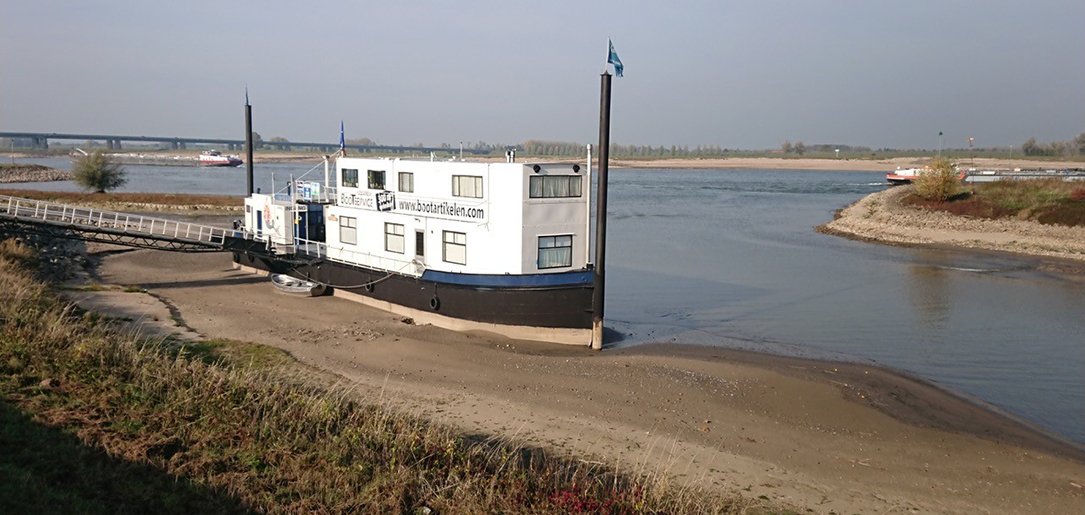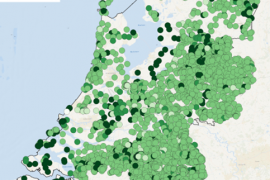Case studies
To mitigate and adapt to increases in drought frequency and severity, researchers at the Water, Climate and Future Deltas hub aim to support future water management decisions in the short and long term in the Rhine-Meuse delta and worldwide. They have been working on improving projections of drought events and possibly related triggering of non-state and one-sided conflicts in conflict-prone deltas, as well as developing knowledge to improve the governance of drought.
Projections for water management plans in the Rhine-Meuse delta
Machine learning
For water managers to be able to make decisions ahead in time, quantification and forecasting of droughts and their impacts are essential. PhD researcher Sandra Hauswirth is therefore testing and using machine learning techniques as a method to project hydrological droughts in the Rhine-Meuse delta based on historical observations, including precipitation, temperature, river discharge and surface water level.
Machine learning techniques allow us to simulate the hydrological system in a complex river delta in a fast and flexible manner
She found that these machine learning models are capable of reproducing historical observations regarding discharge and surface water levels in a fast and computationally less intensive way than commonly used large-scale hydrological models. However, recreating extreme events based on a simple input dataset can be challenging. Specific model training for these drought periods can further improve the estimates of the impact of historical drought events on water resources in the Dutch delta. Secondly, she found that including information about river system management could further improve the hydrological estimates and therefore drought projections. Overall, this new framework incorporating machine learning techniques allows us to simulate the hydrological system in a complex river delta, like the Rhine-Meuse delta, in a fast and flexible manner which is suitable for operational water management
, concludes Sandra Hauswirth.
Future projections
Currently, Sandra Hauswirth is working on testing her framework in a seasonal forecasting setup. This will allow her to generate hydrological drought forecasts to explore the potential of machine learning as a tool for water managers to proactively deal with droughts weeks to months ahead by delivering information on water availability in the near future.
Legal preconditions for successfully managing droughts
Changing the current system
The likely increase in frequency and intensity of droughts leads to the question of to what extent current legal and policy instruments for managing water scarcity risks are sufficient to cope with this problem in the long term. Herman Kasper Gilissen, associate professor of environmental and water law and governance, addresses this question in the Rhine-Meuse delta by identifying the main bottlenecks of the current legal system and possible solutions for improving it.
More attention should be paid to changing the water demand while increasing the responsibilities of both companies and individuals
Herman Kasper Gilissen observed, Currently, the emphasis is very much on increasing the availability of fresh water (demand-driven strategies), with an important facilitating attitude of the government. Our research suggests that more attention should be paid to reducing and changing the water demand (supply-driven strategies) while increasing the responsibilities and self-sufficiency of both companies and individuals
.
AquaConnect
These insights are used in the multidisciplinary research programme AquaConnect which focusses on developing solutions to increase the freshwater self-sufficiency of delta regions. This is done to prevent future freshwater shortages, for instance by the reuse of wastewater and the use of brackish groundwater. A large part of the project comprises exploring technical solutions requiring research in the fields of (bio)chemistry, physics, and data science. However, their implementation involves important legal and institutional questions.
Legal considerations
Within the project, Herman Kasper Gilissen, PhD researcher Sophie Melchers and others will map the legal and institutional points of attention and preconditions for these innovative technical developments. Sophie Melchers’ research will specifically address and formulate recommendations on water reuse, the possible uses of brackish water and the relation between managing institutions, such as the water boards and provincial governments, looking at four regional demonstration cases in the Netherlands: the higher sandy soils, the Greater Amsterdam region, South Holland, and Zeelandic Flanders. Once available, results of her research will be published here.
Strategies to deal with droughts
Aim of the project
In the Seed Money project Dealing with Droughts in Deltas, Carel Dieperink, Annisa Triyanti and two Master students drafted and tested a framework for conducting comparative research on drought governance to gain new insights for further development and improvement of current drought adaptation arrangements.
Five strategies
The analytical framework allows for analysing to what extent each of the following five strategies is integrated into the current drought governance of deltas:
- Prioritization of particular water functions such as drinking water, process water, irrigation, navigation, hydropower, nature, peat dike protection and the prevention of saltwater intrusion.
- Reduction of freshwater demands by introducing water saving technologies (including water reuse), land-use changes, the introduction of more drought resistant or salt tolerant crops and/or by organizing water savings campaigns.
- Buffering of freshwater in lakes, canals or floodplains, by managed aquifer recharge, re-meandering of modified brooks, raising ground water tables or by the construction of smaller scale storage facilities in the built environment (rainwater harvesting).
- Guaranteeing minimum river flows by concluding agreements with upstream countries (international basin strategies).
- Compensation and recovery of residual risks by private or public insurance systems.

Rhine-Meuse delta
Carel Dieperink, senior researcher in multilevel water governance, and colleagues applied the framework to the Rhine-Meuse delta in the Netherlands, a delta which heavily relies on the freshwater discharge from the Rhine and Meuse rivers. During dry periods, there is not enough river discharge to prevent salt water from the North Sea entering the rivers. The current long-term ambition for the delta therefore focusses on buffering fresh water and guaranteeing minimum river flows (strategy 3 and 4) through Smart Water Management, which is used as a bridging concept for the integration of different strategies. The aim of Smart Water Management is to ensure that fresh water can be sent to the place it is needed most through the existing national and regional water infrastructure.
Lessons learnt
By applying the framework to the Rhine-Meuse delta, it became clear that both the framework and the five strategies needed to be adapted. The final version includes a distinction between long-term and short-term strategies, Smart Water Management, technological measures and different geographical scales.
Eventually, these insights could result in policy recommendations to improve governance arrangements on drought
Additionally, Carel Dieperink and colleagues formulated benchmarks using normative criteria (good governance, effectiveness, legitimacy and resilience) that potentially provide first insights into strengths and weaknesses of drought governance in a particular area. Carel Dieperink concludes, Eventually, these insights could result in policy recommendations to improve governance arrangements on drought that may be tailored towards actors operating at different levels
.
Conflict affected by droughts in Africa
Importance of projections
The role of climate change and droughts in triggering armed conflicts is still debated. Postdoctoral researcher Sophie de Bruin emphasizes, Research on long-term projections of conflict risks affected by climate change is important to enable decision-makers to develop well-informed climate adaptation and mitigation plans.
Furthermore, conflicts should be considered in climate research as a factor that could influence a wide range of socio-economic and environmental scenario projections.
In the future, the risk of armed conflicts in Africa largely varies per region and across scenarios
As part of an acceleration grant project from the Pathways to Sustainability strategic theme of Utrecht University, Jannis Hoch, postdoctoral researcher in hydrologic modelling, and Sophie de Bruin explored the relation between socio-economic and hydroclimatic development and non-state, armed conflict risk in Africa with a machine learning approach. They projected future conflict in space and time until 2050 using data from the IPCCs SSP and RCP scenarios and a database of conflict events. Jannis Hoch: In the future, the risk of armed conflicts will change in Africa but the direction and magnitude largely vary per region and across scenarios.
Climate change is also projected to have a rather regional, context-specific influence on the occurrence of conflict risks, with a higher risk resulting both from droughts and increased flood hazard.

Improving projections
The link between droughts and conflict risk is therefore not straightforward. To improve projections, more data on socio-economic development (e.g. ethical inequality or local dependence on agriculture) and conflict events is required and should be included in the model. Additionally, the projections were made based on historical relations, however historical precedents may not be informative for future risks since climate change impacts are expected to become much larger than today. The future impacts on conflict risk may therefore also intensify.


